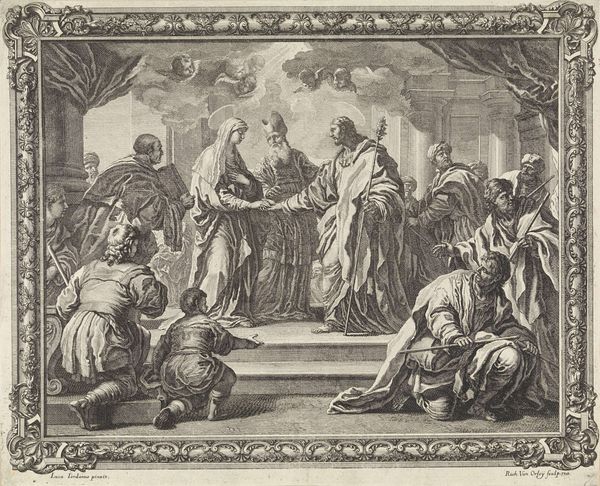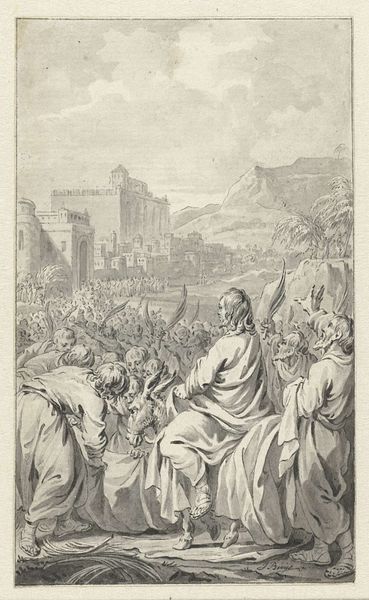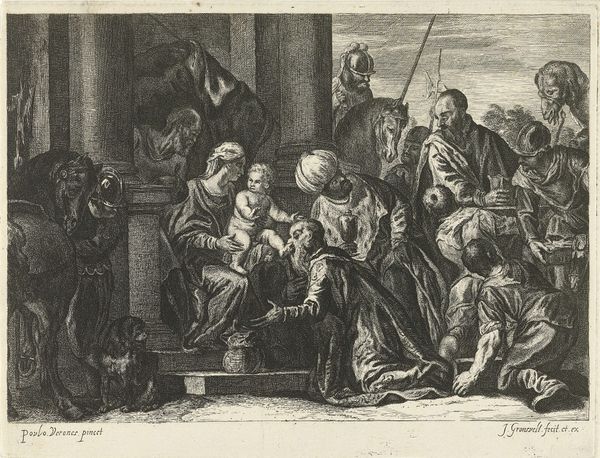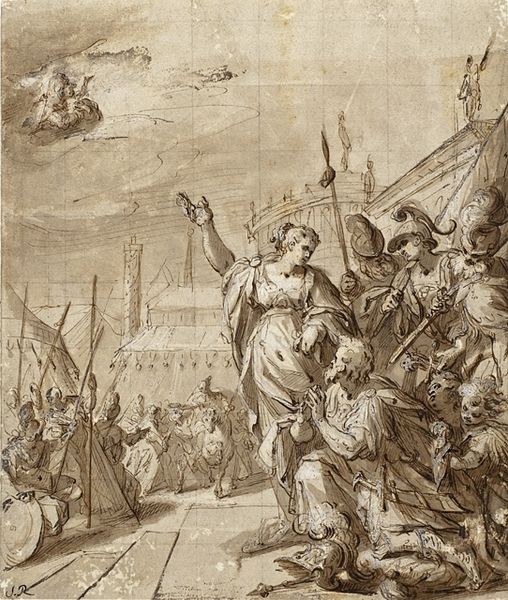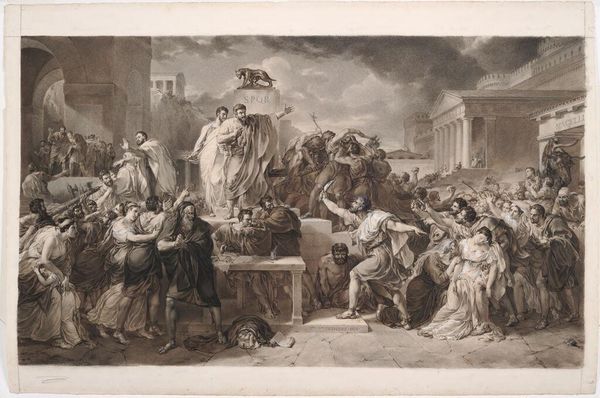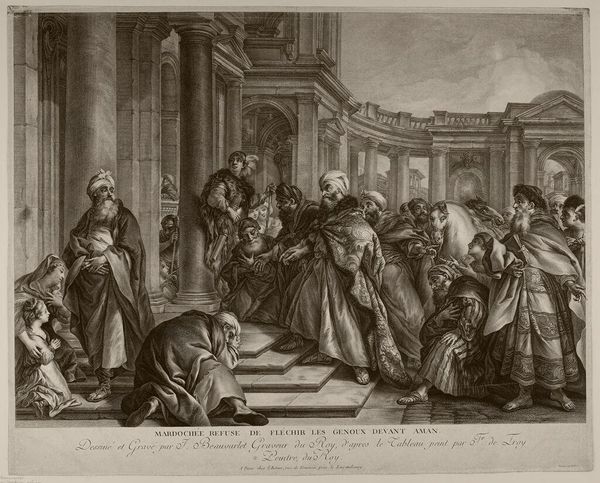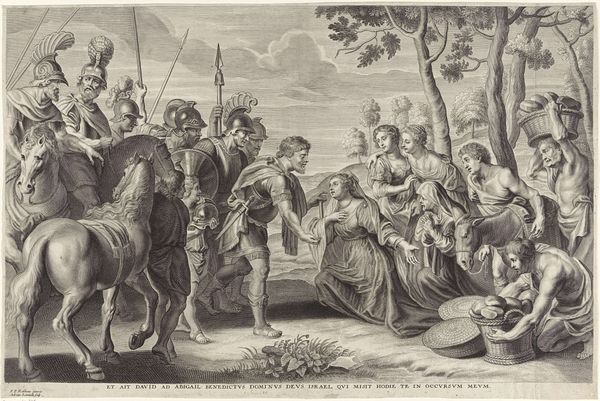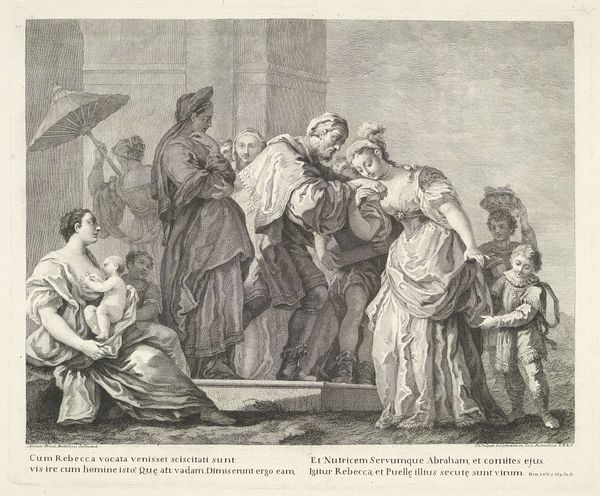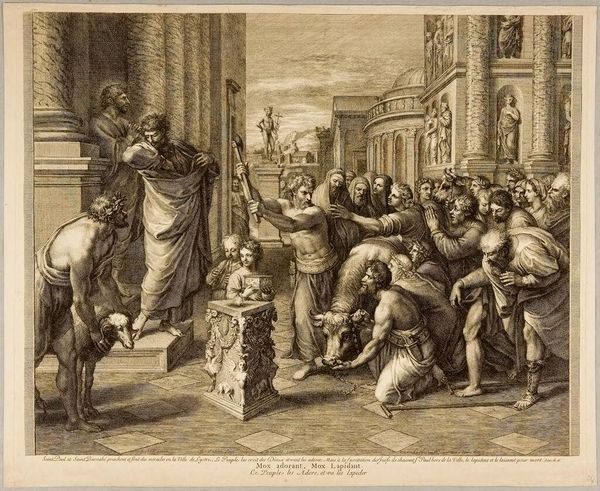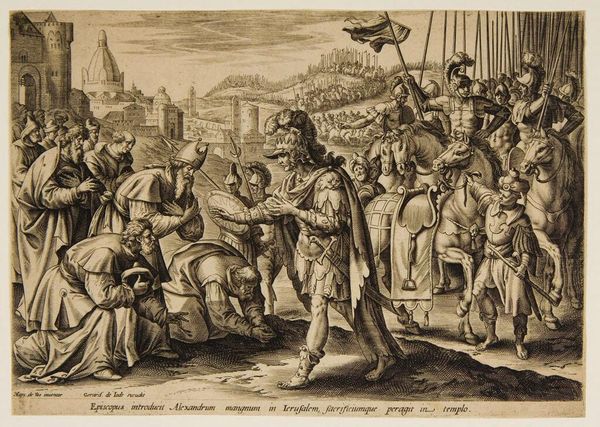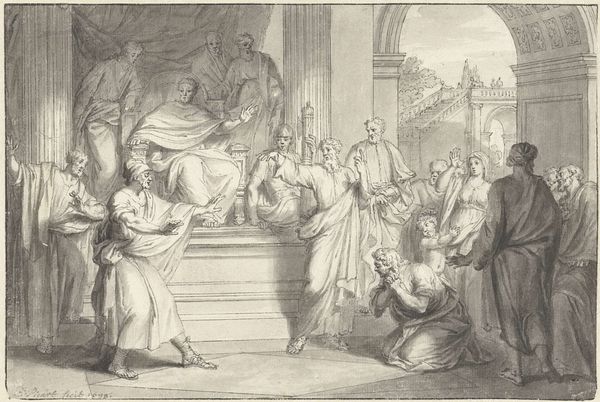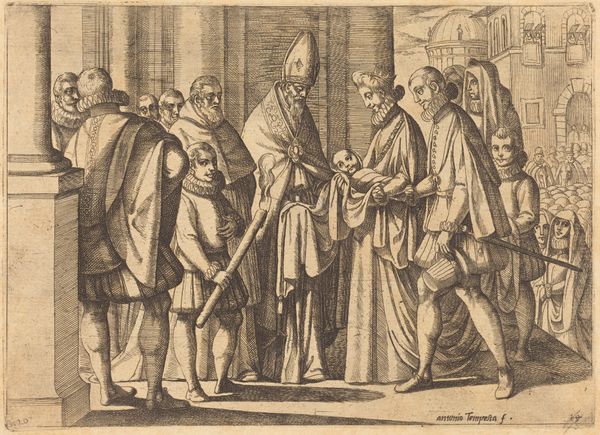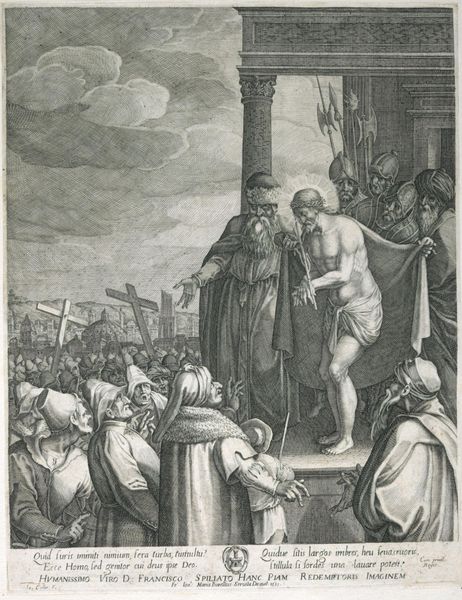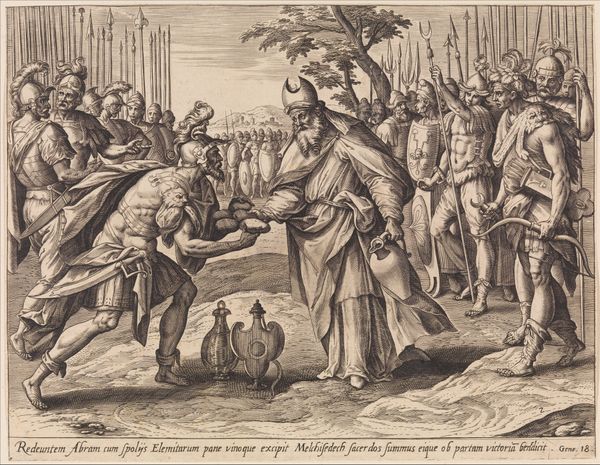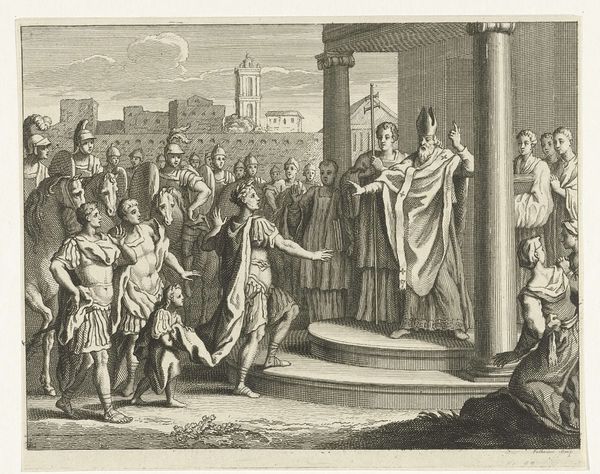
painting, oil-paint
gouache
narrative-art
baroque
painting
oil-paint
figuration
oil painting
painterly
history-painting
realism
Copyright: Public Domain: Artvee
Curator: Look at this theatrical marvel, "The Triumph of Mordecai" crafted in 1736 by Jean-François de Troy, using oil paint with the 'gouache' effect. Editor: It’s vibrant, certainly, with that sense of Baroque drama. All those figures vying for attention – it feels almost... overwhelming? What's going on, exactly? Curator: De Troy captures the biblical story from the Book of Esther, where Mordecai, a Jew, is honored in the streets of Shushan for revealing a plot to assassinate the king. It speaks to themes of justice and deliverance. Editor: Deliverance achieved through, presumably, a whole lot of skilled labor. Think about the process. From pigment creation to brushstrokes on canvas, that oil paint, manipulated to depict silk and stone, reveals a whole network of making and consumption. Curator: Absolutely. We can also interpret the scene through a contemporary lens. The act of public shaming, as employed in Mordecai’s narrative, still resonates within today’s justice system. Mordecai stands as a testament to cultural resilience, demonstrating a commitment to values of cultural pride in the face of adversity. Editor: Speaking of which, look at how those architectural structures behind the figures have been realized. I find it more convincing than the drapery itself. To me, the making of architecture, its realization from raw materials through carefully employed skill, is part of the real subject here. And it reminds us, in looking at "high art," of the very real context that produced it. Curator: That interplay of power dynamics and labor is at the heart of its resonance today. We see those reflected across various cultures in constant negotiation. The painter himself came from a family of painters and it shows his skill and understanding of the genre. Editor: So, while ostensibly depicting a triumphant moment, it reflects a complex world of artistry and materials. Thanks to examining it closely, I come away with an enhanced awareness of artistic agency. Curator: Precisely. Understanding the historical narratives allows us to use these to connect to the present with better understanding.
Comments
No comments
Be the first to comment and join the conversation on the ultimate creative platform.
